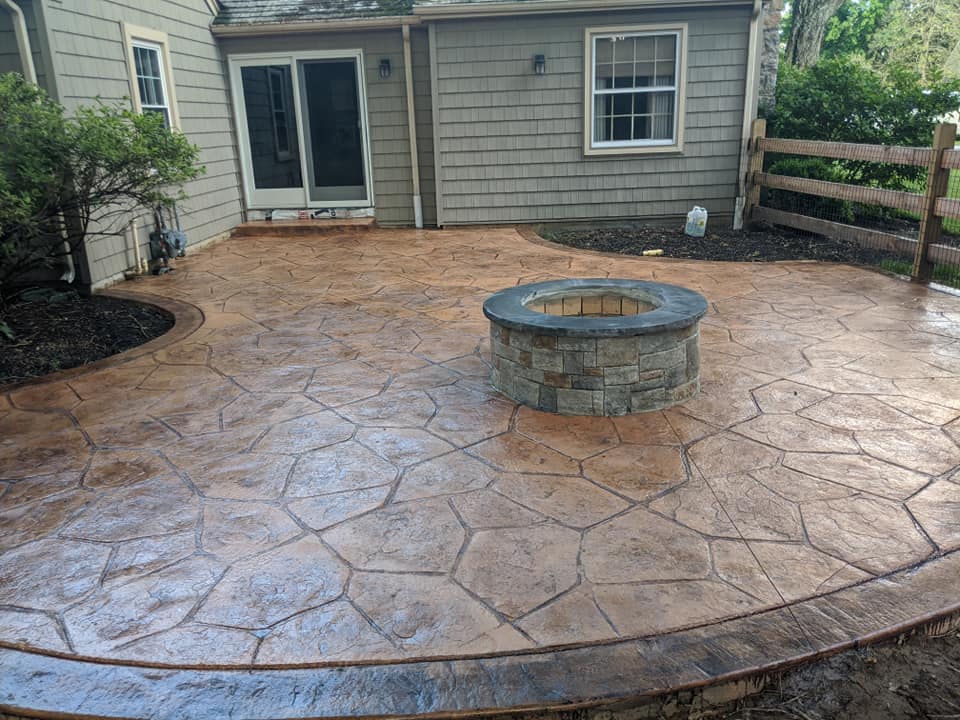
Patios enhance the aesthetics of your home and provide you with a great outdoor space. From adding curb appeal and enhancing your property’s aesthetics to providing you with an outdoor space for relaxation, patios increase the value of your property. However, just like any other structure, they require periodic maintenance and may also need repairs over time.
The frequency of maintenance and the magnitude of repairs depends on how the patio foundation was built. Perhaps the most significant challenge patios face with time is construction settling. Concrete patios usually are installed directly on the soil. The ground beneath settles over time in response. This settling may cause the soil layers beneath to become uneven, making the patio surface unlevel and developing cracks. Nobody wants patio cracks as they are a rather unpleasant site that negatively affects your home’s aesthetics. So how do you build a patio that can stand the test of time?
If you want to build a long-lasting patio, we highly recommend hiring experienced professionals to do it for you. Whether you take it as a DIY task or hire professionals, the following factors must be considered when building a patio.
You may fall for the fanciest patio raw materials, but you must consider their durability and longevity before you do. Nature is incredible, which is why it has provided us with the most durable materials, many of which are pretty affordable. Choose materials with high resistance and tensile strength, such as stone, brick, or concrete pavers. Granite is aesthetic but requires the ground beneath to be perfectly leveled. Wood is not the best because it warps over time and requires frequent treatments.
You cannot prevent construction settling, but you can lessen damage to your foundation. The building site of your patio foundation should be free from vegetation and debris. The ground should be perfectly compacted and leveled. Foundation leveling ensures that the entire patio surfacing is even. If your soil cannot bear a heavy load, the contractors you hire must find a way to create a solid soil layer. Usually, they excavate the site and add other aggregates.
A potential cause of damage to your patio foundation is water. Without proper drainage, rainwater will collect beneath your patio surface and in hairline cracks in your patio surface. Over time, water will erode your patio surfaces. Experts often add a layer of gravel or crushed stone for improved drainage. Without proper drainage, water will pool in your patio or may drain towards your home’s foundations resulting in structural problems, water damage, or erosion known as uneven patio grading.
The stronger the patio foundation, the fewer the chances of sinking and cracking. Building a foundation with multiple layers is the best way of building a strong and reliable base. One example professionals follow is a layer of compacted crushed stone or gravel followed by a layer of sand, all compacted together to form a uniform layer.
Regular cleaning can free your patios from debris and corrosive elements. If you see a crack or feel a loose paver, repair it immediately to prevent further deterioration. You can replace paver blocks with the same size and type. However, the problem may be more significant than it seems, and your patio may require foundation repair if your patio foundation has lost its integrity. Depending on the damage, a professional may partially or entirely replace the foundation. Cracks in your patio are often the signs of the foundation sinking.
Patio surfaces such as paver blocks can get cracked for several reasons. Heavy traffic, erosion, water damage, and improper installation are the potential causes of sinking foundations. The last of these is a more severe problem than the rest and may sometimes require complete foundation replacement. Nearly all of these problems can cause a variety of cracks in your patio surface.
So how do you know when your patio cracks indicate the foundation sinking? More importantly, what causes foundation sinking? There is no definite answer to this. A change in the soil properties because of changing climatic conditions may cause it to shift or lose cohesion. Improper foundation leveling at the time of installation can be one reason. Improper drainage comes from uneven patio grading leading to rapid erosion. Regardless of the cause, foundation sinking has to be addressed at the earliest and may involve partial or complete replacement.
Experienced professionals will install the paving material carefully, with all joints adequately filled and sealed. It is always best to hire contractors known for patio construction. For home foundation repairs in Eastern North Carolina, call Atlantic Foundation. We offer free consultations for homeowners.
Sources-
4 Outdoor Renovations that Add Value to Your Home – FloridaScapes
12 Silent Signs Your House Has Foundation Problems | Family Handyman
5 Paver Patio Problems: Are These Common Issues Legitimate Concerns? (earthturfwood.com)